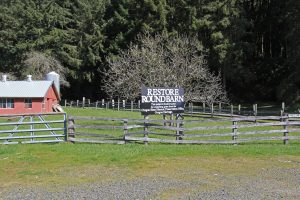
Only a handful of round barns survive today, and so few remain that they are considered “an endangered species” registered with the National Trust for Historic Preservation. Most round barns were built between 1900 and 1920, primarily in the Northeast and then the Midwest. The Shakers, who built the first round barn, believed the circle to be the most perfect shape (the devil couldn’t trap you in the corner)




Never seen them here. Thanks for sharing
I never really knew what they were until I saw this one the other day that was being restored so it forced me to look up the history, of course this one did not look like any I looked up but the sign said round barn, now I am going to be on the outlook for round barns haha Thanks for the visit and the comment Peter